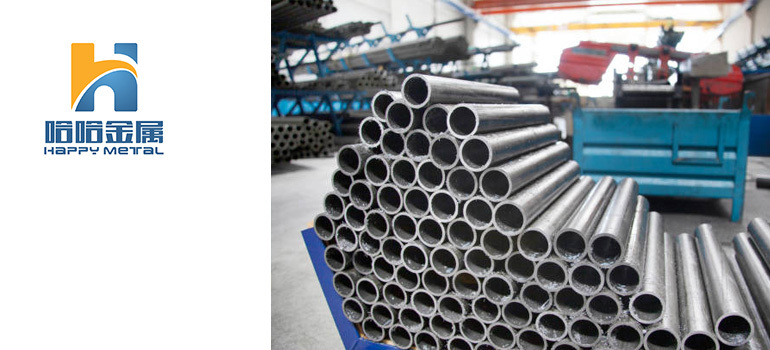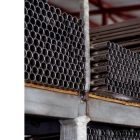304 and 304L stainless steel are two of the most widely used types of stainless steel in various industries. Both are austenitic stainless steels, which means they are non-magnetic and have excellent corrosion resistance. However, there are some differences between 304 and 304L stainless steel that make them better suited for certain applications.
304 stainless steel is a chromium-nickel austenitic stainless steel alloy that contains 18% chromium and 8% nickel. It is the most widely used stainless steel because it is highly resistant to corrosion and is versatile in its applications. 304 stainless steel has excellent resistance to oxidation and has good mechanical properties, making it ideal for a wide range of applications, including food processing equipment, kitchen appliances, and chemical processing equipment.
304L stainless steel is a low carbon version of 304 stainless steel, with a maximum carbon content of 0.03%. This low carbon content improves its weldability and reduces the risk of carbide precipitation during welding. The reduced carbon content also makes it less susceptible to sensitization and intergranular corrosion. Due to its superior corrosion resistance and weldability, 304L stainless steel is used in many applications that require excellent corrosion resistance, such as chemical processing equipment, pharmaceutical equipment, and medical devices.
One of the key differences between 304 and 304L stainless steel is their carbon content. 304 stainless steel contains a higher amount of carbon, up to 0.08%, while 304L stainless steel has a maximum carbon content of 0.03%. This difference in carbon content has an impact on their mechanical properties and corrosion resistance. 304L stainless steel has slightly lower tensile and yield strengths than 304 stainless steel, but its lower carbon content improves its toughness and ductility. Additionally, the reduced carbon content in 304L stainless steel makes it less prone to sensitization and intergranular corrosion, which is a significant problem for 304 stainless steel in certain environments.
In terms of their physical properties, 304 and 304L stainless steel are quite similar. They both have a density of 8.03 g/cm3, a melting point of 1400-1450°C, and a thermal conductivity of around 16.2 W/m-K at 100°C. They also have similar electrical resistivity, with 304 stainless steel at 7.2 x 10^-7 Ω-m and 304L stainless steel at 7.9 x 10^-7 Ω-m at 20°C.
Stainless Steel Material Properties
Stainless steel is a highly versatile and durable material used in a wide range of applications, from kitchen appliances and medical devices to industrial equipment and structural components. It is a type of alloy steel that contains a minimum of 10.5% chromium, which gives it its unique properties, including corrosion resistance, strength, and durability. In this article, we will discuss five important stainless steel material properties.
Corrosion Resistance:
One of the most important properties of stainless steel is its high resistance to corrosion. The chromium in stainless steel reacts with oxygen in the air to form a thin, invisible layer of chromium oxide on the surface of the steel, which acts as a protective barrier against rust and other forms of corrosion. This makes stainless steel an ideal material for use in harsh environments where corrosion is a concern.
Strength and Durability:
Stainless steel is a strong and durable material that can withstand high levels of stress and strain without deforming or breaking. It has a high tensile strength, which is the maximum amount of force that it can withstand before breaking, and a high yield strength, which is the amount of force required to permanently deform the material. This makes stainless steel an ideal material for use in structural applications where strength and durability are important.
Heat Resistance:
Stainless steel has a high melting point, which makes it resistant to high temperatures. It also has good thermal conductivity, which means that it can transfer heat efficiently without deforming or melting. This makes stainless steel an ideal material for use in high-temperature applications such as industrial furnaces, exhaust systems, and engine components.
Easy to Fabricate:
Stainless steel is a highly versatile material that is easy to fabricate and shape into a variety of forms, including sheets, plates, bars, and pipes. It can be welded, machined, and formed into complex shapes using a variety of tools and techniques, making it ideal for use in custom applications where specific shapes and sizes are required.
Hygienic and Easy to Clean:
Stainless steel is a non-porous material that is easy to clean and maintain. It is resistant to bacteria, mold, and other forms of contamination, which makes it an ideal material for use in applications where hygiene is a concern, such as food processing equipment and medical devices. Additionally, stainless steel has a smooth, polished surface that resists dirt and grime, making it easy to clean and keep looking like new.
Stainless steel is an alloy steel that contains a minimum of 10.5% chromium, which gives it its unique properties, including corrosion resistance, strength, and durability. However, there are several different types of stainless steel, each with its own mechanical properties and characteristics. In this article, we will discuss the mechanical properties of stainless steel and the differences between the different types.
Tensile Strength:
Tensile strength is the maximum amount of force that a material can withstand before breaking. The tensile strength of stainless steel varies depending on the type of stainless steel, but generally ranges from 500 to 2000 megapascals (MPa). Austenitic stainless steels, such as 304 and 316, have higher tensile strength than ferritic stainless steels, such as 430 and 409.
Yield Strength:
Yield strength is the amount of force required to permanently deform a material. The yield strength of stainless steel is also dependent on the type of stainless steel, with austenitic stainless steels having higher yield strength than ferritic stainless steels.
Hardness:
Hardness is a measure of a material’s resistance to deformation, scratching, or abrasion. Stainless steel is generally a relatively hard material, with a hardness range of 150 to 400 on the Brinell scale. Martensitic stainless steels, such as 410 and 420, have higher hardness than austenitic and ferritic stainless steels.
Ductility:
Ductility is the ability of a material to deform without breaking. Stainless steel is generally a ductile material, with ductility ranging from 25% to 55%. Austenitic stainless steels, such as 304 and 316, have higher ductility than ferritic stainless steels.
Toughness:
Toughness is a measure of a material’s ability to absorb energy before breaking. Stainless steel is generally a tough material, with toughness ranging from 50 to 200 joules per square meter (J/m2). Duplex stainless steels, such as 2205, have higher toughness than austenitic and ferritic stainless steels.
In addition to these mechanical properties, there are also differences between the different types of stainless steel. Austenitic stainless steels, such as 304 and 316, are the most commonly used types of stainless steel due to their high corrosion resistance, strength, and ductility.




